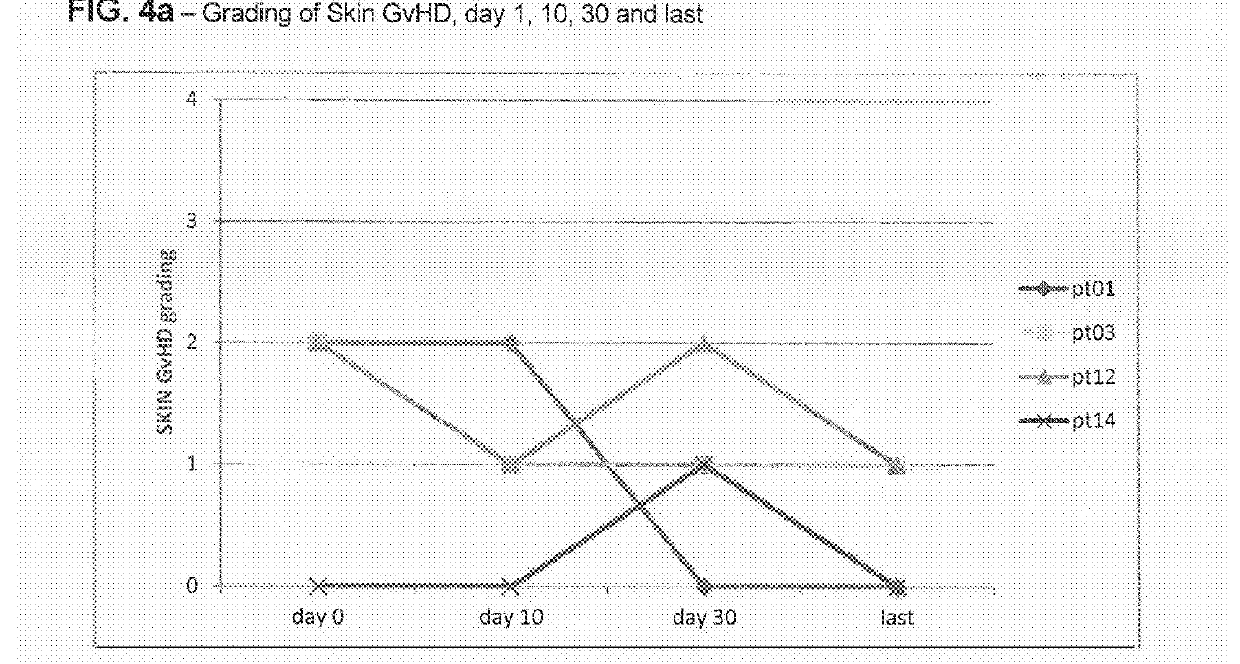Anti-CD26 antibodies and uses thereof
a technology of anti-cd26 and antibodies, applied in the field of anti-cd26 antibodies, can solve problems such as haematologic and respiratory systems
- Summary
- Abstract
- Description
- Claims
- Application Information
AI Technical Summary
Benefits of technology
Problems solved by technology
Method used
Image
Examples
example 1
Determining the Nucleotide Sequences
[0210]This process can be summarized into three phases:
Phase I—Cloning of Genes Encoding for Antibody Chains
[0211]Extraction of total RNA from Hybridoma cells producing CDina26 (Hybridoma cell line deposit under the reference PD 12002, see above);[0212]Reverse transcription;[0213]Amplification of the gene of interest using specific oligonucleotides as primers;[0214]Cloning of gene using a prokaryotic vector;[0215]Bacterial transformation;[0216]Control of cloning procedure, selecting suitable transformed clones.
Phase II—Sequencing of Genes Encoding for Antibody Variable Chains and Bioinformatics Analysis:[0217]Picking and sequencing of 100 colonies for both VH and VL chains;[0218]Bioinformatics analysis of sequences;[0219]Generation of a consensus sequence, if required, for the VL and VH chains and indication of the consensus sequence differing bases and their percentage.
Phase III—Sequencing of Genes Encoding for Antibody Constant Chains:[0220]Sequ...
example 2
CDina26 Binding to Human and Porcine CD26
[0224]The binding of CDina26 to human CD26 has been compared to its binding to minipig CD26 by Biacore® assay and multiparametric flow cytometry. CDina26 is not able to recognize Porcine Antigen neither as soluble protein or as a transmembrane protein expressed on T lymphocytes.[0225]1. Flow cytometry analysis was utilized to determine the ability of CDina26 to bind to cell surface expressed CD26.[0226]Lymphocytes were isolated from human or minipig peripheral blood samples by centrifugation on gradient density. The Binding of CDina26 to human T Lymphocytes was analyzed by multiparametric flow cytometry.[0227]More than 45% of Human T lymphocytes expressing CD3 marker bind to CDina26. On the contrary only 2% of porcine T lymphocytes expressing CD3 marker bind to CDina26. This may be seen from FIG. 9.[0228]2. Binding of CDina26 to either Human or Porcine Antigen (purchased from Sigma CAT# D4943 and D7052) was analysed by Biacore®.[0229]CDina26 ...
example 3
[0233]CDina26 is produced by hybridoma cell line deposit at CBA-ICLC of Genoa (Italy) under reference PD 12002. The hybridomas may be cultured in serum free medium. CDina26 comprises a mixture of murine antibodies. In particular, CDina26 comprises a murine, monoclonal antibody, which is of IgG 2B class and specifically binds to human CD26.
[0234]A pharmaceutical composition comprising CDina26 is present in the form of a clear colourless solution containing CDina26, which solution can be used for intravenous infusion (e.g. 1 mg of CDina26 / 1 ml of solution; the solution can be contained in a vial).
PUM
| Property | Measurement | Unit |
|---|---|---|
| dissociation constant | aaaaa | aaaaa |
| dissociation constant | aaaaa | aaaaa |
| dissociation constant | aaaaa | aaaaa |
Abstract
Description
Claims
Application Information
 Login to View More
Login to View More - R&D
- Intellectual Property
- Life Sciences
- Materials
- Tech Scout
- Unparalleled Data Quality
- Higher Quality Content
- 60% Fewer Hallucinations
Browse by: Latest US Patents, China's latest patents, Technical Efficacy Thesaurus, Application Domain, Technology Topic, Popular Technical Reports.
© 2025 PatSnap. All rights reserved.Legal|Privacy policy|Modern Slavery Act Transparency Statement|Sitemap|About US| Contact US: help@patsnap.com



